#science fiction review
Photo
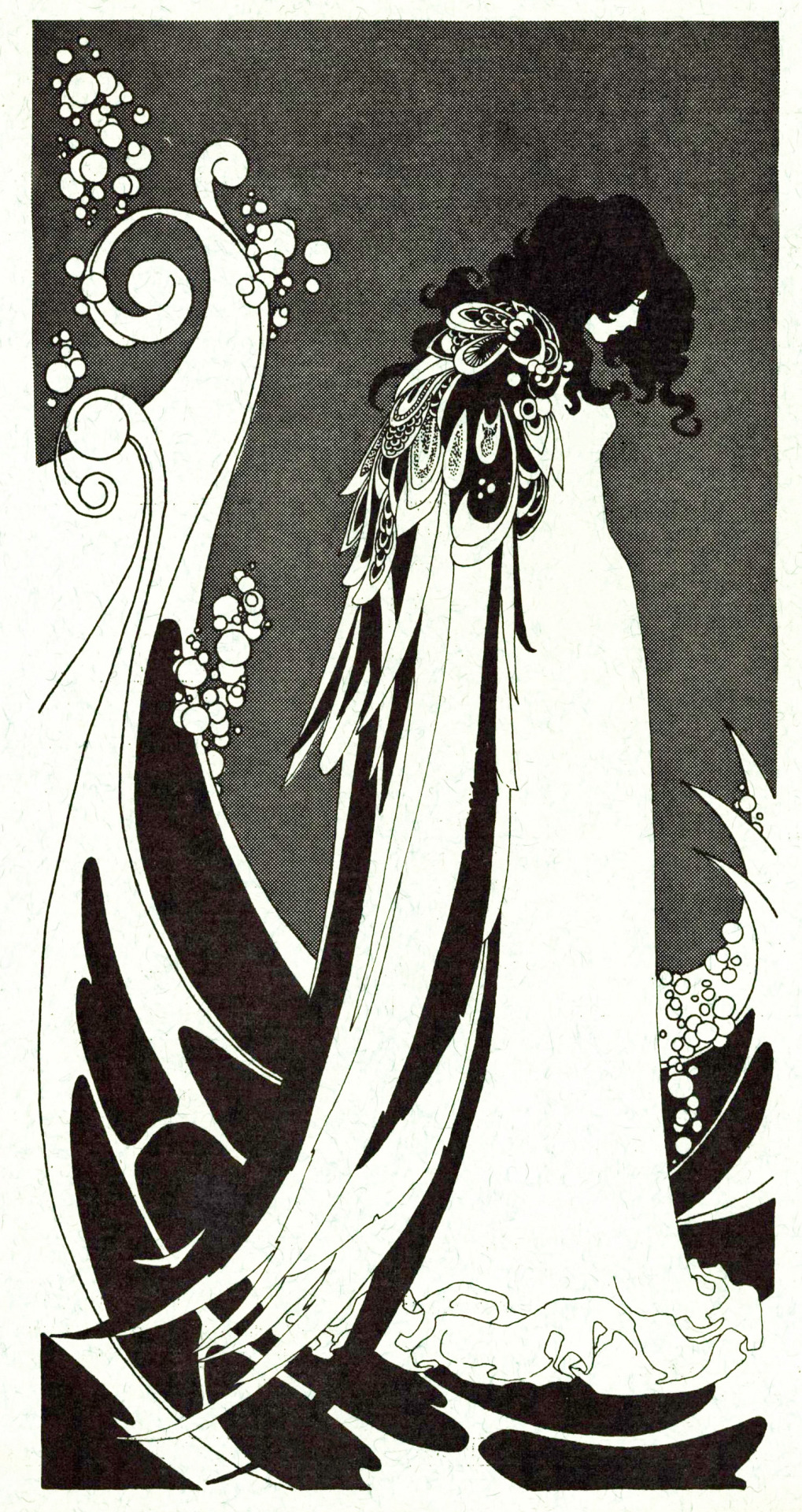
Alicia Austin, ''Science Fiction Review'', #39, Aug. 1970
Source
#alicia austin#american artists#science fiction review#magazine covers#cover art#fanzines#science fiction fanzines
7K notes
·
View notes
Text
Review: Graphic Audio – Fugitive Telemetry by Martha Wells
Series: The Murderbot Diaries #6Author: Martha Wells
Find it on Goodreads | Graphic Audio | More Murderbot
Graphic Audio Review
Wow, I can’t believe Graphic Audio is almost caught up with The MurderBot Diaries already! (Side note: what should I listen to next?). Fugitive Telemetry is the sixth novella in the series. It’s also the first one that’s set on Preservation Station.
Yeah, it’s…
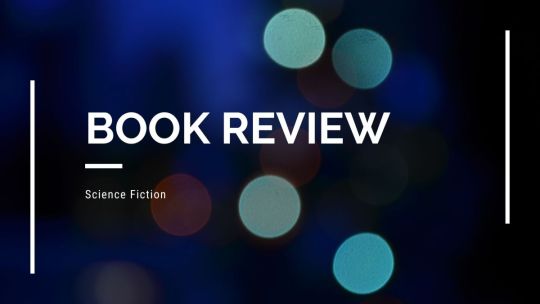
View On WordPress
#Book#Book Box#Book Review#Books#Fiction#Fugitive Telemetry#Fugitive Telemetry by Martha Wells#Graphic Audio#Literary#Literature#Martha Wells#Review#Science Fiction#Science Fiction Review#The Murderbot Diarie#The Murderbot Diaries#The Murderbot Diaries 6
5 notes
·
View notes
Text
Mune - Ein Faun rettet seine Welt (Teil 1)
von KIP SUPERNOVA
"Man erzählt sich, dass zu Beginn die Welt dunkel und kalt war. Ein super starker Mann - der erste Wächter der Sonne - fing die Sonne ein, und zog sie zu unserem Planeten heran, sodass fortan Licht und Wärme herrschten.
Der erste Wächter des Mondes brachte den Mond selbst aus dem Reich der Träume, und mit ihm die Nacht und die Träume in die Welt.
Fortan stehen Tag und Nacht im Gleichgewicht auf unserem Planeten."
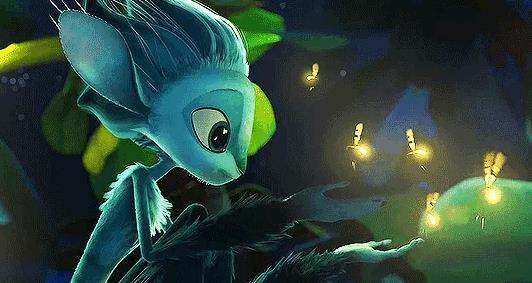
Bild: On Animation Studios / Paramount Pictures
So beginnt der traumhaft schöne Film "Mune - Der Wächter des Mondes" unter der Regie von Alexandre Heboyan und Benoît Philippon, produziert von On Animation Studios und Paramount Pictures. Seine Kino Premiere hatte "Mune" am 6. Dezember 2014 und ist wahrlich der ideale Film für die Vorweihnachtszeit, denn er entführt uns in eine Welt, die auf einem kleinen Planeten spielt, auf dem allerhand seltsamer Wesen leben.
Die Geschichte
Die "alten" Wächter der Sonne und des Mondes übergeben ihr Zepter an ihre Nachfolger: Sohone und Leeyoon. Sohone aus dem Volk des "Tages" ist ein muskulöser, ehrgeiziger Athlet, der vor allem mit seiner Körperkraft und dem lässigen Auftreten die weiblichen "Fans" beeindrucken möchte. Leeyoon, ein kühles, ernsthaftes Wesen, das entfernt an ein Alpaka oder Lama erinnert, hat "jahrelang" für diesen Augenblick trainiert und studiert.
Während dieser historischen Zeremonie lernen wir auch Glim kennen: Genau wie ihr Vater ist Glim ein "Wesen der Dämmerung": Ihr Körper ist aus einer Art Wachs, das im direkten Sonnenlicht schmilzt, und in der Nacht erstarrt. Glim kann sich deshalb immer nur im Zwielicht aufhalten. Als begeisterter Astronomie-Fan wohnt sie dem Ereignis, an dem die neuen Wächter von Sonne und Mond ernannt werden, bei (und sitzt genau zwischen den Tag- und den Nachtwesen.
Eines der Nachtwesen, die zum größten Teil aus Faunen besteht, ist Mune. Mune hat blaues Fell, ein sehr gütiges und sanftes Gemüt und besitzt die Fähigkeit, böse Träume zu vertreiben und andere Wesen einen ruhigen, friedvollen Schlaf zu bescheren.
Während der Zeremonie "entscheidet sich der Mond" gegen Leeyon und für Mune als neuen Wächter des Mondes - zur großen Überraschung aller! - denn alle Faune - auch sein Vater - sind stets genervt von Munes ungeschickten Verhalten.
Da er sich verraten und unfair behandelt fühlt, ist Leeyoon empfänglich für die "bösen Alptraumschlangen", die ihm einreden, dass er seinen "rechtmäßigen Platz als Wächter des Mondes" verdient hätte und "dieser blauen Ratte Mune" wieder entreißen müsse. Dazu müsse er nur Sohone die Sonne stehlen und Necross, dem Herr der Unterwelt überlassen.
Blind vor Wut und der Verführung des Bösen führt Leeyoon den teuflischen Plan aus und verschafft den Dämonen Mox und Spleen Zugang zum Sonnentempel, wo die Dämonen die Sonne stehlen und Necross bringen.
Mune, völlig überfordert von seiner neuen Aufgabe, steuert den Mondtempel völlig chaotisch über den Planeten, bringt das Gleichgewicht von Tag und Nacht durcheinander und verliert schließlich um ein Haar den Mond!
In diesem Augenblick reißt Leeyoon sich seinen Posten als Mondwächter an sich; Mune läuft traurig und enttäuscht weg, Sohone stellt fest, dass die Sonne weg ist und aus Mune, Sohone und Glim, die zu ihnen stößt, wird eine Fellowship unterschiedlichster Persönlichkeiten, die sich in die Unterwelt begibt, um die Sonne zu retten und sich dem böse Necross zu stellen …
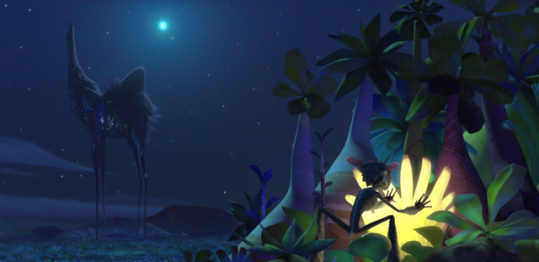
Bild: On Animation Studios / Paramount Pictures
Die Charaktere und ihre Eigenarten
Bereits sehr früh wird deutlich, dass die Bewohner der Planeten spezielle Fähigkeiten besitzen: So kann Mune wie bereits erwähnt Träume und Schlaf beeinflussen, Sohone besitzt außergewöhnliche, körperliche Fähigkeiten und Glim ein beeindruckendes Wissen über Astronomie sowie den Lehren der "Bücher der Ahnen".
Die Bevölkerung des Planeten setzt sich aus einer Mischung aus Wesen zusammen, die beispielsweise auf der "Tagseite" (in der es aber auch Nacht wird und umgekehrt) humanoiden Reptilien ähneln, deren Körper jedoch aus Erde oder Gestein zu bestehen scheinen. Die "Dämmerwesen" wie beispielsweise Glim und ihr Vater sind humanoid und bestehen aus einer Art Wachs.
Auf der Nachtseite (in der es aber auch Tag wird) leben Faune, Alpaka ähnliche humanoide Wesen sowie Tiere die wie Schafe aussehen in üppigen Wäldern, die an die Welt von Pandora aus "Avatar" erinnern. Vor allem die Faune besitzen besondere Fähigkeiten: Sie können in der Nacht leuchtende Blumen wachsenen lassen, Schwärme von Glühwürmchen steuern und wie Mune schlafenden Wesen eine ruhige Nacht spenden.
Die Fähigkeiten der Wächter werden durch ihren Eintritt als Sonne- bzw. Mondwächter um ein Vielfaches dann verstärkt, was an Superkräfte erinnert: Sohone wird durch die Kraft der Sonne quasi eine Art Superman, der über unglaubliche, körperliche Stärke verfügt, Mune wird zum "Dreammaster": Ihm gelingt es nämlich am Ende Necross einfach "schlafen" zu legen, in seinen Traum einzusteigen und dort die bösen Dämonen, die Necross vergiftet haben, zu zerstören.
Phospho, ein ehemaliger Wächter des Mondes (ein Wesen, das an einen Manta-Rochen erinnert) besitzt immer noch die Fähigkeit, einen Teil seiner Lebensenergie auf andere Wesen zu übertragen und somit ihr Leben zu retten.

Bild: On Animation Studios / Paramount Pictures
Die "Physik" des Planeten
Dass der Planet in "Mune" sehr klein ist, dass die Himmelsobjekte Mond und Sonne ebenfalls in ihrer Größe (etwa so groß wie ein Medizinball) geradezu lächerlich für aufrechte Physik- und Astronomiefans rüberkommen, muss nicht diskutiert werden. Denn der Film entführt uns von Anfang an in eine Welt, in der eigene physikalische Regeln gelten: In ein Märchen. Sowohl optisch als auch erzählerisch befinden wir uns weder in einem Fantasyfilm, noch in einer Science Fiction Geschichte, sondern in einem Märchen-Bilderbuch, wo die gegebenen Gesetze und ihre Welt akzeptiert und nicht hinterfragt werden.
Besonders faszinierend wird hier der "Sprung der Dimensionen" - sowohl erzählerisch als auch optisch, denn als Mune mit Glim zusammen das Reich der Träume betritt, um einen neuen Mond zu holen, werden wir von der 3D Computeranimation in eine 2D Zeichentrickwelt katapuliert.
Auf dem Planeten bringt der Mond "Licht in die finstre Nacht" und versorgt auch die Wesen der Nacht, wie die Faune, mit Energie, damit diese den schlafenden Wesen angenehme Träume bescheren können. Die Sonne bringt Licht und Wärme und somit Wachstum und Lebensfreude. Es ist quasi das "Ying und Yang" am Himmel: Leben und Wachstum am Tage, Ruhe und Frieden in der Nacht.
Welche Aufgaben haben die Wächter?
Wie der Name schon sagt, sorgen die Wächter dafür, dass dieses Gleichgewicht auf der Welt eingehalten wird: Die Sonne wie der Mond dürfen sich nicht zu langsam und nicht zu schnell bewegten. Gesteuert wird ihre Bewegung durch die "Tempel" - dies sind gigantische Tiere, die den Mond bzw. die Sonne hinter sich herziehen. Die Wächter wohnen auf diesen Tempeln und steuern die Himmelsobjekte.
Während der "Sonnentempel" an einen riesigen, steinernen Dinosaurier erinnert, mutet der "Mondtempel" wie ein riesiges, schwarzes Kamel an.
Da der Film "Mune" eine sehr vielseitige Welt zeigt, möchte ich meine Ausführungen zu dem Film in einem nächsten Blog fortsetzen, wo ich auf die Produktion des Films und am Ende auf mein persönliches Fazit dann näher eingehen möchte.
9 notes
·
View notes
Photo
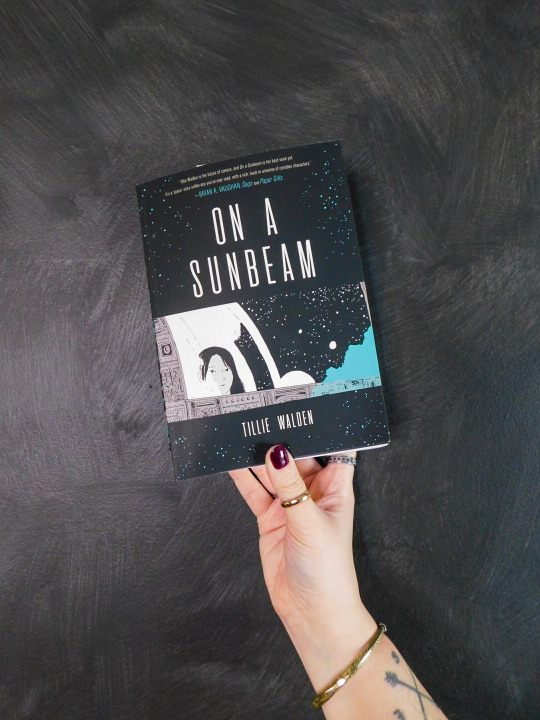
Title: On a Sunbeam
Author: Tillie Walden
Genre: Graphic Novel, Science Fiction
Published: May 22, 2018
Rating: 5/5
Mia is a new member of a crew who rebuilds beautiful and broken-down structures in space. She falls in love with a mysterious new student and joins the ship to track down her long-lost love. Tillie Walden's work is an inventive world, a breathtaking love story, and stunning art.
The graphic novel, On a Sunbeam, has a unique and imaginative storyline that seamlessly blends science fiction, romance, and adventure. The characters are complex and well-developed, and their relationships with one another are authentic and heartfelt. The artwork is gorgeous and highly detailed, adding to the overall immersive experience of the story.
I highly recommend "On a Sunbeam" to anyone who enjoys graphic novels, science fiction, and queer representation in literature. The story is engaging and emotionally resonant, and the artwork is simply stunning.
#on a sunbeam#tillie walden#graphic novel#sapphic#science fiction#science fiction review#book review#book recommendations#book rating
11 notes
·
View notes
Video
youtube
right on the day this video was about to be shared here, I get this book’s sequel recommended to me. A coincidence, to be sure, but a very welcome one.
@xiranjayzhao notice me, senpai
#the heir's lair#book review#sff#sff review#science fiction#science fiction review#dystopia#dystopian science fiction#dystopia review#own voices#chinese culture#yin and yang#the five elements#mecha#mecha fiction#iron widow
2 notes
·
View notes
Text
The Man Who Ruined Science Fiction (part 3)
Roger Elwood’s own editorial ineptitude plus the fact he stretched himself too thin undercut the potential of the Laser Books line.
The packaging looked superb, each cover painted by legendary sci-fi artist Frank Kelly Freas featuring a cameo head portrait of that book’s central character with a background element indicating what the story would be about. A distinctive logo that couldn’t be easily swiped by competitors, enough marketing muscle to get the books out to the readers.
What could possibly go worng?
In a word:
Elwood.
Here’s the hidden clue I hinted out throughout these posts: Elwood saw himself as a devout Christian.
Before anyone raises a sneery lip at that, let the record show being a devout Christian does not impair the genuine artist.
It’s not necessarily a benefit, but it needn’t be an impediment.
Ray Bradbury springs to mind, as good a Christian as one could hope to meet, but certainly not a prude and certainly not morally judgmental.
Which by all accounts are two traits deeply engrained in the late Roger Elwood.
While Elwood certainly enjoyed science fiction and fantasy, his personal religious code worked against him embracing the more challenging examples of the genre, especially in the middle of the aforementioned Old Thing vs. New Wave debate.
To his credit, Elwood wanted to promote works that reflected his moral values, and he appeared open and above board in that aspect.
But this also blocked him from writers who would challenge those sensibilities.
He might still have pulled it off and established Laser Books as a respected line in the field, but his over-eager ambition led him to accept far too many substandard works while his editorial policies led him to drastically revise more than a few novels that were latter reprinted as intended to much better acclaim.
A lot of Laser’s material appeared to be trunk novels that sat gathering dust in a desk drawer for well over a decade. I remember reviewing one for Dick Geis’ Science Fiction Review, going at it hammer and tong for the blatant and ugly 1930s racial stereotypes permeating it.
He asked me why I went after a gnat with an elephant gun.
By 1977 Elwood suffered his third strike in science fiction and slunk off into Christian publishing, writing 30 some novels between 1988 and 2001 (plus a posthumous book in 2011).
It is a testimony to his impact in the field that during the time I packaged the Serenity graphic novels for the Christian book market, nobody ever mentioned his name or his books, much less held them up as examples of what to strive for.
Now, I bear no personal grudge against the man, never meeting him or sharing any direct communication with him.
But I do recognize similarities and differences between us.
© Buzz Dixon
1 note
·
View note
Text
The Fountains of Paradise - Classic Sci-fi Novel Review
New review, this time classic Arthur C. Clarke. Thanks for checking it out.
Author: Arthur C. Clarke
Publisher: Gollancz
Country: UK
Year: 1979
What was intended to be Clarke’s last science-fiction novel (yeah, that went well) is tight, snug, and cosily familiar. There’s something about a Clarke novel that does that; one of the reasons why I love his work every time I get around to ploughing through a few pages. In this novel, a scientist and engineer plans to use a…

View On WordPress
#arthur c clarke book review#arthur c clarke review#classic science fiction#fountains of paradise#fountains of paradise arthur c clarke#fountains of paradise book review#fountains of paradise novel#fountains of paradise review#literature reveiw#literature review#science fiction book review#science fiction review#scifi book review#scifi novel review#scifi review#scifi#science fiction#sci fi#review#book review
0 notes
Text
“The fallen angel becomes a malignant devil. Yet even that enemy of God and man had friends and associates in his desolation; I am alone.”
- Mary Shelley, Frankenstein
#book review#books and reading#coquette#dark academia#pinterest#reading#book quotes#book tumblr#booklr#bookshelf#mary shelley#frankestein#gothic#gothic literature#literature#quotes#science fiction#authors
375 notes
·
View notes
Text
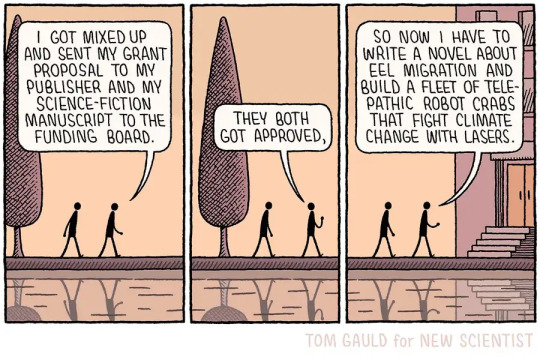
694 notes
·
View notes
Text
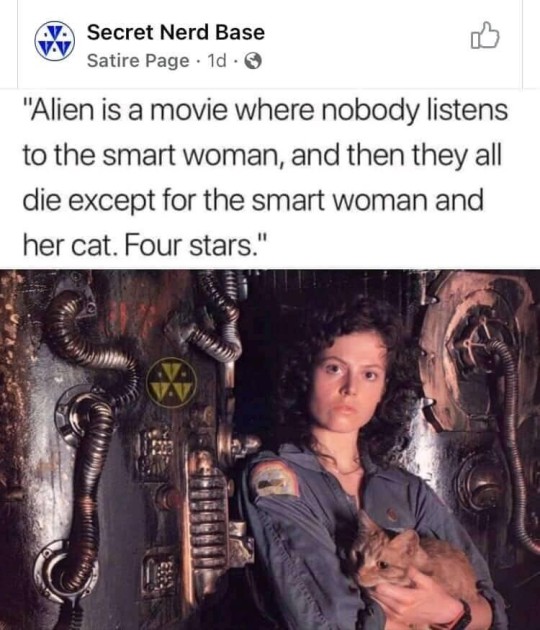
#ellen ripley#alien#aliens#alien 3#alien resurrection#movie#scifi#retro scifi#science fiction#review#anarchofeminism#anarchofeminist#cyberpunk#paranormal#extraterrestrial#supernatural#horror#horror movie#horror movies#movies#scifiseries#ausgov#politas#auspol#tasgov#taspol#australia#movie review#movie recommendation#movie reference
530 notes
·
View notes
Text
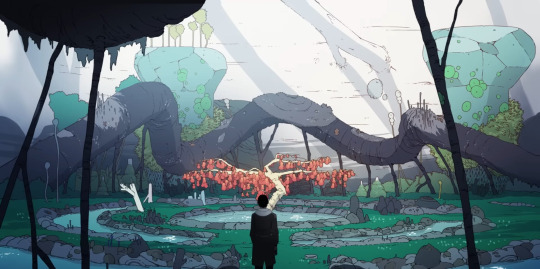
i just finished watching scavenger's reign yesterday, and let me tell y'all this is genuinely the best piece of sci-fi media i have seen in a long while, and it's insane how little i've seen this show being discussed online! it is probably the most unique and viscerally stunning series i’ve ever seen. the world that they have created is equal parts fascinating and terrifying, and every part of it feels fully realized. sci-fi is at its best when it lets go of nostalgia and explores the unknown, and SR gives me hope that real sci-fi can take root again, and be something beyond what came before it.
i will refrain from giving too much away in my discussion because this show works best the less you know going into it. the premise for this show is simple: crewmembers of a crashed freighter ship are left scattered across an alien planet. a good chunk of time has already passed by the time the show begins, and a few of the survivors have already established camps. however, things quickly spiral out of control as disaster wipes away their progress and forces each of them to move on. it's a harsh and unforgiving world that tests them each and every step of the way on their journey.
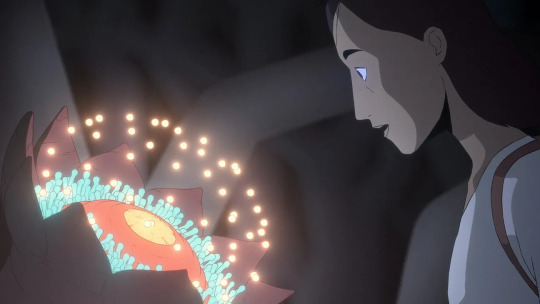
worldbuilding is where this show truly shines. it is no easy thing to design an entire ecosystem from scratch. it takes an insane amount of creativity and attention to detail to pull off what this show has. and my god did they fucking pull it off. living balloons floating through the air, large sea creatures that suck up their eggs when faced with danger, tendrilled plants that spawn clones of their prey to track them down - it is a frightening, surreal, and violent world, but harmonious in its own way. some creatures poison you, others clean off the poison. there are your typical type of predators that come at you with sharp fangs and giant pincers, but then there are predators that hunt via more insidious means: manipulating the memories of their prey to have them do their bidding, or hijacking their bodies from the inside. ultimately, the characters who fare best in this world are those who learn to adapt to it, and even sync with it.
SR also boasts a surprisingly well-crafted narrative. we are shown just enough of the world to keep us hooked, but it still feels like there is a lot left to be discovered. i also really enjoy the way the story is delivered to us. we follow the journeys of a few isolated groups whose paths gradually intersect. the characters are all fleshed out and three-dimensional - they were different enough to be unique and quirky, but never too different that it felt overboard. the way they react is exactly how humans in those circumstances would and should, the dialogue and voice acting were just superb. it felt so insanely real at times.
i really do hope that this show gets greenlit for a second season. this type of pure creative freedom is what we need right now. all in all, scavenger's reign is a gorgeous nightmare that you need to experience for yourself.

#scavengers reign#sr#review#recommendation#movie review#movie recommendation#show review#show recommendations#animation#scifi#science fiction#xenobiology#alien
363 notes
·
View notes
Text
Review: Final Girls by Mira Grant
Author: Mira Grant (Seanan McGuire)Publisher: Subterranean PressReleased: April 30, 2017Received: Own
Goodreads | More Mira Grant Reviews
Book Summary:
Dr. Jennifer Webb has done the impossible. She’s created a piece of virtual reality technology so powerful that it can change our minds – literally. She’s using this technology to heal old psychological wounds – to do good. But she’s well aware…

View On WordPress
#Book#Book Review#Books#Fiction#Final Girls by Mira Grant#Horror#Horror Novel#Horror Review#Literary#Literature#Mira Grant#Review#Science#Science Fiction#Science Fiction Review#Seanan McGuire#Subterranean Press
7 notes
·
View notes
Text
Das Sternenfeuer von Antares

Ich streife mir mit letzter Kraft meine Handschuhe von den Händen und schleppe mich krallend über den staubigen, heißen Boden auf den Quanten–Integrator zu. Meine Schutzbrille vermag kaum noch meine Augen vor dem Licht der Sonne zu schützen. Jede einzelne Zelle meiner Haut scheint trotz Strahlenschutzanzug in Flammen zu stehen. Schweiß tropft über meine Stirn auf den Boden, wo er sofort verdampft.
Jetzt bereue ich es, meine Handschuhe ausgezogen zu haben, aber es war nötig, denn die Dinger waren gerade dabei, zu schmelzen. Es sind auch nur noch wenige Zentimeter bis zum Solar– Injektor; nur noch eine oder zwei Minuten durchhalten, Kip. Nur noch ein paar Herzschläge, Atemzüge und die letzten Augenblicke des Lebens ...
Über mir wird die Sonne von Biru zur Supernova, und ich werde das letzte Lebewesen auf dem Planeten sein, das noch atmen und denken konnte ...
[ PROLOG zu meinem ersten Science Fiction Roman "Das Sternenfeuer von Antares" ]
#science fiction#science fiction art#aliens#3d animation#science fiction review#blender 3d#außerirdische#3dartwork
1 note
·
View note
Text
“Maybe it’s that I find the idea comforting… that thousands of years after you’re gone… is when you really live. That your echo is louder than your voice.”
— Tamsyn Muir, Gideon the Ninth
#gideon the ninth#tamsyn muir#harrow the ninth#gideon nav#harrowhark nonagesimus#keep reading#bookguide#currently reading#new books#aesthetic#quotes#bibliophile#book blog#book summary#book review#necromancy#necromancer#fantasy#science fiction#scifi#dulcinea septimus#canaan house
79 notes
·
View notes
Text
Molly McGhee’s “Jonathan Abernathy You Are Kind”

Jonathan Abernathy You Are Kind is Molly McGhee's debut novel: a dreamlike tale of a public-private partnership that hires the terminally endebted to invade the dreams of white-collar professionals and harvest the anxieties that prevent them from being fully productive members of the American corporate workforce:
https://www.penguinrandomhouse.com/books/734829/jonathan-abernathy-you-are-kind-by-molly-mcghee/
Though this is McGhee's first novel, she's already well known in literary circles. Her career has included stints at McSweeney's, where she worked on my book Information Doesn't Want To Be Free:
https://store.mcsweeneys.net/products/information-doesn-t-want-to-be-free
And then at Tor Books, where she worked on my book Attack Surface:
https://us.macmillan.com/books/9781250757531/attacksurface
But though McGhee is a shrewd and skilled editor, I think of her first and foremost as a writer, thanks to stunning essays like "America's Dead Souls," a 2021 Paris Review piece that described the experience of multigenerational debt in America in incandescent, pitiless prose:
https://www.theparisreview.org/blog/2021/05/17/americas-dead-souls/
McGhee's piece struck at the heart of something profoundly wrong in American society – the dual nature of debt, which represents a source of freedom for the wealthy, and bondage for workers:
https://pluralistic.net/2021/05/19/zombie-debt/#damnation
When billionaire mass-murderers like the Sacklers amass tens of billions of liabilities stemming from their role in deliberately starting the opioid crisis, the courts step in to relieve them of their obligations, allowing them to keep their blood-money:
https://pluralistic.net/2023/08/11/justice-delayed/#justice-redeemed
And when Silicon Valley Bank collapses due to mismanagement by ultra-wealthy financiers, the public purse yawns open and billions flow out to ensure that the wealthiest investors in the country stay whole:
https://pluralistic.net/2023/03/18/2-billion-here-2-billion-there/#socialism-for-the-rich
When predatory payday lenders target working people and force them into bankruptcy with four-digit APRs, the government intervenes…to save the lenders and keep workers on the hook:
https://pluralistic.net/2022/01/29/planned-obsolescence/#academic-fraud
"Debtor vs creditor" is the oldest class division we have. The Bronze Age custom of jubilee – the periodic cancellation of all debts – wasn't some weird peccadillo. It was essential public policy, and without jubilee, the hereditary creditor class became the arbiter of all social priorities, destabilizing great nations and even empires by directing production to suit their parochial needs. Societies that didn't practice jubilee (or halted it) collapsed:
https://pluralistic.net/2022/07/08/jubilant/#construire-des-passerelles
Today's workers are debt burdened at scales and in ways that defy comprehension, the numbers are so brain-breakingly large. Students who take out modest loans and pay them off several times over remain indebted decades later, with outstanding balances that vastly outstrip the principle:
https://pluralistic.net/2020/12/04/kawaski-trawick/#strike-debt
Workers who quit dead-end jobs are billed for five-figure "training repayment" bills that haunt them to the end of days:
https://pluralistic.net/2022/08/04/its-a-trap/#a-little-on-the-nose
Hospitals sue indigent patients at scale, siccing debt-collectors on people who can't pay – and were entitled to free care to begin with:
https://armandalegshow.com/episode/when-hospitals-sue-patients-part-2/
And debt collectors are drawn from the same social ranks as the debtors, barely trained and unsupervised, engaging in lawless, constant harassment of the debtor class:
https://pluralistic.net/2023/08/12/do-not-pay/#fair-debt-collection-practices-act
McGhee's "American Dead Souls" crystallized all of this vast injustice into a single, beautiful essay – and then McGhee crystallized things further by posting a public resignation letter enumerating the poor pay and working conditions in New York publishing, triggering mass, industry-wide resignations by similarly situated junior editorial staff:
https://electricliterature.com/molly-mcghee-jonathan-abernathy-you-are-kind-interview-debut-novel-book-debt/
Thus we arrive at McGhee's debut: a novel written by someone with a track record for gorgeous, brutally insightful prose; incisive analysis of the class war raging in the embers of capitalism's American Dream; and consequential labor organizing against the precarity and exploitation of young workers. As you might expect, it's fantastic.
Jonathan Abernathy is a 25 year old, debt haunted, desperately lonely man. An orphan with a mountain of college debt, Abernathy lives in a terrible basement apartment whose rent is just beyond his means. The only thing that propels him out of bed and into the world are his affirmations:
Jonathan Abernathy you are kind
You are well respected and valued by your community
People, including your family, love you
That these are all easily discerned lies is beside the point. Whatever gets you through the night.
We meet Jonathan as he is applying for a job that he was recruited for in a dream. As instructed in his dream, he presents himself at a shabby strip-mall office where an acerbic functionary behind scratched plexiglass takes his application and informs him that he is up for a gig run jointly by the US State Department and a consortium of large corporate employers. If he is accepted, all of his student debt repayments will be paused and he will no longer face wage garnishment. What's more, he'll be doing the job in his sleep, which means he'll be able to get a day job and pull a double income – what's not to like?
Jonathan's job is to enter the dreams of sleeping middle-management types in America's largest firms – but not just any dreams, their nightmares. Once he has entered their nightmare, Jonathan is charged with identifying the source of their anxiety and summoning a more senior operative who will suck up and whisk away that nagging spectre, thus rendering the worker a more productive component of their corporate structure.
But of course, there's more to it. As Jonathan works through his sleeping hours, he is deprived of his own dreams. Then there's the question of where those captive anxieties are ending up, and how they're being processed, and what new products can be made from refined nightmares. While Jonathan himself is pulling ever so slightly out of his economic quagmire, the people around him are still struggling.
McGhee braids together three strands: the palpable misery of being Jonathan (a proxy for all of us), the rising terror of the true nature of his employment, and beautifully turned absurdist touches that are laugh-aloud funny. This could be a mere novel of ennui and misery but it's not – it's a novel of hilarity and fear and misery, all mixed together in a glorious and terrible concoction that is not like anything else you've ever read.

If you'd like an essay-formatted version of this post to read or share, here's a link to it on pluralistic.net, my surveillance-free, ad-free, tracker-free blog:
https://pluralistic.net/2024/01/08/capitalist-surrealism/#productivity-hacks
#pluralistic#books#reviews#science fiction#molly mcghee#debt#graeber#capitalist realism#capitalist surrealism#dreams#gift guide
78 notes
·
View notes
Text
Dune: Part Two (2024) review
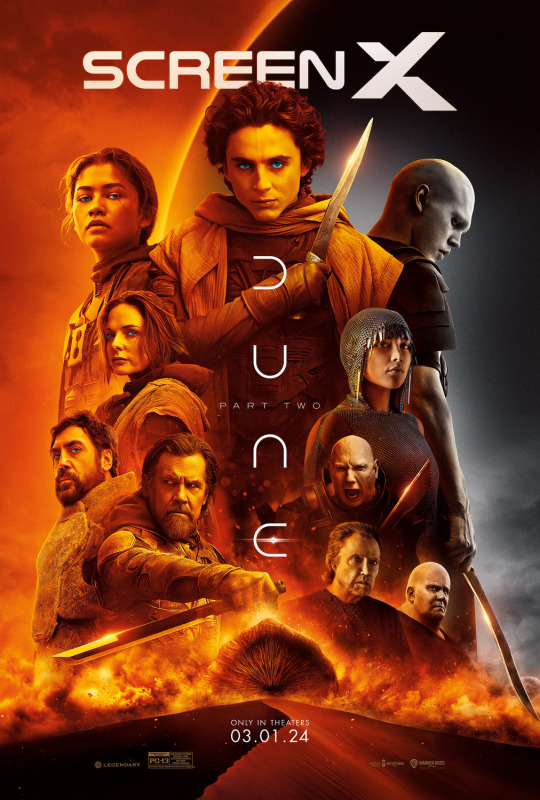
I’m fully aware that the Dune sequel has been hit by acclaim from both critics and audiences, and I shall share my own thoughts in due course, but also whilst presenting itself as a serious and sophisticated piece of artsy science fiction tackling challenging themes of religion and politics, from a marketing standpoint this film has been a major farcical meme. From the popcorn buckets shaped like suggestive sand worms (or more so accurately as deformed buttholes) to the viral TikTok video of an unnamed man riding a makeshift sand worm around a cinema lobby on his way to Arrakis, or more likely to one of the gazillion screenings of Dune: Part Two. But yes, absolutely mad bonkers advertising techniques, and not at all reflective of how seriously and straight faced the actual film plays. Anyway, let’s talk Duuuuuuuuuuuuuuuneee…..
Plot: Paul Atreides unites with Chani and the Fremen while seeking revenge against the conspirators who destroyed his family. Facing a choice between the love of his life and the fate of the universe, he must prevent a terrible future only he can foresee.
Controversial opinion - I was not a fan of the first Dune. I thought it was all spectacle and no substance, and even then in regards to said spectacle, it was just sand. Lots of sand and bland dark visuals. I understand that the first movie acts as a massive exposition piece with lots of world building and introductions of all the characters and various political families and the spice trade and all that sweet jazz, but honestly it all felt so dragged out. Also a lot of narrative choices felt really immature and I did not buy it. In fact, the only memorable part for me was that female voice screaming on the music score every time something crazy happened, and my does that woman have some strong vocal pipe work! Like damn, her screams…. I really felt them!
Going into Dune: Part Two, I was very much of two mindsets. One was more so a feeling of obligation to watch it, as I wasted 3 hours of my life watching the first one that I felt I deserved some kind of closure for my efforts. The other being Denis Villeneuve. Aside from the first Dune, he’s a director that has constantly impressed me with his unique vision and style. Simply look at his past filmography! Prisoners. Enemy. Arrival. Sicario. All impressive pieces of genre filmmaking. Then there’s Blade Runner 2049, that took the classic Ridley Scott movie and managed to improve on it and become one of the most thrilling science fiction epics of the last decade. Also the trailers looked appropriately exciting, and it seemed like the second movie was actually gonna deal with some serious shit finally. Again, my problem with the first Dune wasn’t that it was slow. I mean, I can happily watch Paris, Texas any day of the week and be mesmerised by the empty yet beautiful takes of the American desert. It’s more-so that the first Dune felt aimless and messy. As for Dune: Part Two?
Well, if we’re going to use The Lord of the Rings terminology, and boy am I happy to refer to the dear-to-my-heart Middle Earth whenever I have the chance, then Dune: Part Two holds the scale of The Two Towers. I may not agree with all of it, and there are still some moments that drag, though The Two Towers is also guilty of that - I’m looking at you Treebeard! But overall this is one hell of a cinematic experience and achievement. Visually for one this is eye-candy. And yes, yet again there’s lots of sand, but this time around Villeneuve manages to find very creative ways to add/take away colour to make many sequences truly impressive. There’s an early scene where the Fremen are fighting Harkonnen goons in the desert and the entire thing is seeped in this blood orange palette, reminiscent of the Martian Chronicles, and then there’s the part where we are introduced to the Harkonnen home planet where the entire screen is drenched in hardcore intense black-and-white due to their sun only giving out white and black light, and instead of fireworks there are these watercolour stroked exploding in the sky, to of course the much talked about eye-dropping sand worm riding into battle scene that had the feel of the giant elephants appearing in The Return of the King, and yes that was another most delightful reference to Lord of the Rings! As I was saying though, the entire movie visually is certainly something to be in awe of.
Also Hans Zimmer’s score!! Of course the man’s a genius, having composed so many of cinema’s greatest musical compositions. I can recommend his Live in Prague performance! Hit after hit, and I find myself spinning it on my record player a good few times. Hans Zimmer’s Dune: Part Two soundtrack feels like a thunderously bombastic continuation and expansion of the first film’s more quiet and moody opener, and that shift in tone allows for some truly spectacular weaving of the composer’s thematic tapestry for Dune – with the finest new thread being the absolutely gorgeous love theme for Paul and Chani. A truly beautiful piece that echoes the heartbreaking tragic nature of the central romance of the film. Needless to say I’ve already pre-ordered the limited edition coloured vinyl of Dune 2’s soundtrack from Mutant (the new Mondo).
As for the narrative, as that is where I felt the first film faltered the most in my humble opinion (which I share so publicly online). I really do feel like the sequel is a major set up, for since the first one focused more on the endless word building and set-ups, this movie is all about the character developments. The scope is still big with the various political and religious elements that are tackled and explored throughout, however at the same time Dune: Part Two manages to feel more intimate compared to its predecessor, with the unravelling of the romance between Paul and Chani, but more so the inner struggles of Paul Atreides, as he tries to balance his emotions of revenge with the feeling of wanting to belong somewhere, as well as his denial of being called the so-called Messiah to the Fremen people. Look, the idea of the chosen one has been a concept that has been done over and over again, however I felt here they managed to really make it feel unique and different, with Paul choosing not to take this major responsibility due to visions of the future where he sees this choice result in darkness and dread, yet at the same time realising he has no choice but to follow his destiny and calling. It’s powerful stuff.
The cast list is stacked in this one. Timothee Chalamet is a rising star, having previously excelled his dramatic chops in Call Me by Your Name and his charismatic whimsy in last year’s Wonka, but this is by far his most impressive acting feat. You truly feel his character turning from boy to man, and it’s a real and raw performance. Zendaya shares great chemistry with him, but also in her own right gives a strong turn as a warrior Fremen conflicted with what she sees and thinks. Javier Bardem’s Stilgar adds a slice of surprising humour to the mix, being so obsessed with Paul being part of the prophecy that anything he’d do, Stilgar would find that to be part of what has been foretold. Paul Atreides could literally fart and Stilgar would observe in wonder proclaiming “as it was written”. There’s also a tiny No Country for Old Men reunion with Bardem being joined by Josh Brolin, who’s alright by the way, though it’s a typical Brolin brute role. Charlotte Rampling as the Reverend Mother continues being truly despicable and honestly that wench deserves to be put in her place - the movie’s ending is very satisfying in this regard. There’s also some newcomers to the Dune world too. Florence Pugh as the Princess reminded me a lot of Padme from Star Wars, and Christopher Walken I felt was tad miscast as the Emperor. Don’t get me wrong, Walken is a great actor, but his way of speech has been impersonated and overdone so many times that it is difficult to take him seriously in a role like this. Minus a couple of strong deliveries Walken felt really lazy here. You know who wasn’t lazy though? Austin Butler! This guy understood the assignment, playing the psychotic nutter Feyd-Rautha and he’s truly unrecognisable. Even his voice is different. Gone is Elvis and in cometh his Skarsgard impression! He’s brutal and maniacal and was honestly superb, and I wish there was more of him in this movie.
Again, it’s far from a perfect movie. There are parts still that drag, and certain times where things feel surprisingly rushed, but overall this is an experience through and through, and unlike my feelings after the first film, here I find myself really looking forward to the inevitable third part. In fact f*ck it, who am I kidding - this movie is bloody incredible!! Like I can’t even - it’s abso-fricking-lutely spectacular!! And by the way I read a bit about the Frank Herbert Dune books now and the future sequels are gonna be mad, just saying. Paul’s son becomes this half-man half-worm known as the God Emperor! Things are gonna get weird! Anyway, Dune: Part Two - go see it if you haven’t already. And in Austin Butler’s voice: “may thy knife chip and shatter”.
Overall score: 9/10
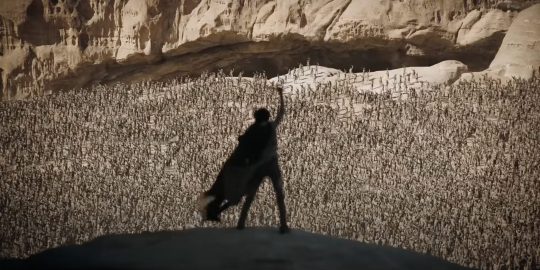
#dune part 2#dune#dune part two#dune movie#denis villeneuve#timothée chalamet#zendaya#movie#movie reviews#film#film reviews#drama#science fiction#cinema#2024#javier bardem#frank herbert#dune part two review#hans zimmer#josh brolin#christopher walken#austin butler#florence pugh#rebecca ferguson#stellan skarsgard#charlotte rampling#sand worm
47 notes
·
View notes